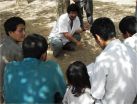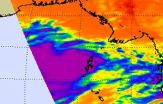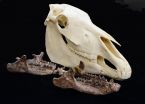(Press-News.org) A new study from the University of Utah confirms that substantial numbers of teens are sexting – sending and receiving explicit sexual images via cellphone. Though the behavior is widely studied, the potentially serious consequences of the practice led the researchers to more accurately measure how frequently teens are choosing to put themselves at risk in this fashion.
The study surveyed 1,130 undergraduate students about their experiences sexting in high school. Nearly 20 percent reported they had sent a nude photo of themselves to another via cellphone and 38 percent had received such a picture. Of the number who had received a sext, nearly one in five had forwarded the picture to someone else.
"The results are nearly identical to the findings from our 2013 study of high school students," said Don Strassberg, professor of psychology at the University of Utah and lead author on both studies. "We believe the consistency reflects a valid estimate of the prevalence of teen sexting – and the numbers are considerable."
Strassberg points out the risks of using a cellphone to send intimate messages goes well beyond that of sharing say, print photographs as a form of flirting.
"Nothing has changed in that realm – except that the technology makes it easy and thus, more vulnerable to misuse," he said. "You lose control of the image the moment you push 'send.' From there the risks, which can be especially grave for teens, range from embarrassment and humiliation to unwanted sexual advances to cyberbullying and blackmail, and though rare, possibly to felony charges for pornography trafficking because they are minors."
According to Strassberg, the results of the two sexting studies from his lab, as well as those from studies conducted across the U.S., demonstrate that sending naked selfies is not limited to former U.S. congressmen or Hollywood starlets, but is going on in high schools across the country and in significant numbers. This behavior continues, despite the potentially serious consequences that can occur when sexting goes wrong.
How the Study was Conducted
The research, published online in the journal Computers in Human Behavior, was conducted at the University of Utah over a three-year period. Participants were students enrolled in undergraduate psychology classes and queried about their experiences sexting during high school – after 2007, when it became more commonplace. Though the research was completed at a single, public institution, a quarter of the 1,130 students surveyed attended high school outside Utah, and 7 percent outside the United States, providing a measure of economic and geographic diversity.
In addition, the definition of "sext" used in the study was very specific – sending, receiving and forwarding sexually explicit cellphone photos that reveal genitals of either sex or female breasts. The specificity of the definition and study design were intended to overcome the methodological variety of other previous studies and draw more reliable conclusions about how widespread sexting is.
"Sexting is far from a rare occurrence," said Strassberg, "and the ability of a recipient to forward on a sext to others can be problematic, especially for young women who share an explicit photo. Because once a sext has been sent, the sender has no control over who, or how many, will eventually see that picture. Other than the adolescent mentality that overestimates benefits over risks, we don't yet know why teens are choosing to put themselves at risk."
And although men and women both sext, there are striking differences between the sexes. Equal numbers of men and women reported that they had sent a sext, but significantly more men than women said they had received a sext – 47.1 percent of males versus 32.1 percent of females. That may be in large part because of the participants who had received a sext, men were significantly more likely to have forwarded the picture than were women, 24.2 percent versus 13 percent.
Who gets sexts? Mostly "boyfriend/girlfriends," although women indicated that as the target 83 percent of the time, while for men it was 55 percent. Men sent sexts to "a friend (not a boyfriend/girlfriend)" 31 percent of the time versus 15 percent for the women in the survey. Strikingly, men said they sexted "someone I wanted to date or hook up with" (12 percent) or "an acquaintance I just met" (2.4 percent), while women did neither. Strassberg concludes that these differences, which are all statistically significant, are consistent with findings that men have more positive attitudes toward casual sex than do women.
Researchers also looked at the role of religiosity in a teen's sexting behavior. Participants were asked to rate the importance of religion in their lives on a five-point scale from "extremely important" to "not at all important." Those describing religion as extremely important were far less likely to have sent a sext than others, only 4.6 percent for males and 6.9 percent for females. The same difference between those rating religion as extremely important and others held for those having received a sext – only 10.8 percent for males and 10.7 for females – even though they have less control over receiving than sending.
Strassberg concludes that there are still a number of important questions about teen sexting that need reliable answers before adults can decide how – or even if – they should respond to the popular phenomenon. Further study is warranted to better understand teen motives, get a clearer sense of their appreciation of possible consequences of sexting and whether sexting increases or decreases initiation of physical sexual interaction, among other issues.
INFORMATION:
The full study can be found here, http://www.sciencedirect.com/science/article/pii/S0747563214004488.
About the University of Utah
The University of Utah, located in Salt Lake City in the foothills of the Wasatch Range, is the flagship institution of higher learning in Utah. Founded in 1850, it serves more than 32,000 students from across the United States and the world. With more than 100 major subjects at the undergraduate level and more than 90 major fields of study at the graduate level, including law and medicine, the university prepares students to live and compete in the global workplace. Learn more about all the U has to offer online at utah.edu.
Two NASA satellites provided data on clouds, rainfall and the diameter of the eye of Super Typhoon Vongfong as it turned north in the Northwestern Pacific Ocean.
Typhoon Vongfong formed on October 2, 2014 southeast of Guam. Typhoon Phanfone, that recently pummeled Japan, formed near the same area in the western Pacific Ocean.
Vongfong had wind speeds of about 120 knots (138 mph) when the Tropical Rainfall Measuring Mission or TRMM satellite flew above the intensifying typhoon's eye on October 7, 2014 at 0800 UTC (4 a.m. EDT). TRMM's Precipitation Radar (PR) showed that ...
WASHINGTON, DC – October 8, 2014 - Elephants are among the most intelligent non-humans, arguably on par with chimps, but both African and Asian elephants—separate species—are endangered. In 1995, 16-month old Kumari, the first Asian elephant born at the National Zoo in Washington, DC, died of a then-mysterious illness. In 1999, Gary Hayward of Johns Hopkins University and collaborators published their results identifying a novel herpesvirus, EEHV1 as the cause of Kumari's sudden death. They now show that severe cases like this one are caused by viruses ...
ST. LOUIS, MO – OCTOBER 8, 2014 – What could the natural diversity and beauty of plant leaves have in common with one of mankind's greatest creative inventions, the violin? Much more than you might imagine.
"There are many parallels between leaves and violins," says Dan Chitwood, Ph.D., assistant member, Donald Danforth Plant Science Center in St. Louis, Missouri. "Both have beautiful shapes that are potentially functional, change over time, or result from mimicry. Shape is information that can tell us a story. Just as evolutionary changes in leaf shape inform ...
Gamma rays are the highest-energy form of radioactive waves known in the universe. However, how they're made and where they come from have been a bit of a mystery.
But now a team of researchers, led by Michigan State University astronomer Laura Chomiuk, has made a discovery that may shed some light on the subject.
Using highly detailed radio telescope images, Chomiuk and her team have pinpointed the location where an explosion on the surface of a star, known as a nova, emitted gamma rays.
This, said Chomiuk, is something they did not expect to encounter.
"We not ...
In western society, where keeping up with the Joneses — or, better yet, surpassing them — is expected and even encouraged, status matters. So important is it that for many people, physical and emotional wellbeing are directly connected to their place in the social hierarchy.
That's hardly news to anthropologists at UC Santa Barbara, but they were taken by surprise when research findings indicated that the same relationship exists among the Tsimane, an egalitarian society of forager-farmers in the Bolivian Amazon. Their work is published online in the journal ...
The Northern Indian Ocean has awakened after a tropical slumber and created Tropical Storm Hudhud on Oct. 8 and NASA's Aqua satellite passed overhead.
The Atmospheric Infrared Sounder or AIRS instrument that flies aboard NASA's Aqua satellite passed over Tropical Cyclone Hudhud on Oct. 8 at 6:53 UTC (2:53 a.m. EDT and captured infrared data on the storm revealing bands of strong thunderstorms around the center.
Animated infrared satellite imagery showed that the low-level circulation center was consolidating, and there is an improvement in the banding of thunderstorms ...
TORONTO, October 7, 2014 – Health technology company Infonaut, a MaRS client, has released a study showing that hospital patients may be at significant risk of infection due to their own poor hand hygiene. The findings were measured in a Toronto hospital using Infonaut's Hospital Watch Live™ system, innovative technology designed to assist hospitals in monitoring and controlling the spread of infections by analyzing the movement and behaviour of hospital staff, patients and equipment.
The study found that patients on average washed their hands only 30% of the time ...
Researchers at Children's Hospital Los Angeles (CHLA) have described for the first time a specific perceptual learning deficit in mice with a mutation of the same gene as found in children with Fragile X Syndrome (FXS). Their findings, published on October 8 by PLOS ONE, may offer an effective pre-clinical platform for both investigating how brain circuitry is altered in FXS and testing drugs to improve these symptoms in children.
FXS is the most common inherited form of mental impairment, affecting an estimated 1 in 4,000 males and 1 in 6,000 females. Symptoms include ...
Four families likely influenced violin shape over four centuries, with many imitating famous designs like Stradivarius, according to a study published October 8, 2014 in the open-access journal PLOS ONE by Daniel Chitwood from Donald Danforth Plant Science Center in Missouri.
The first violins appeared in 16th century Italy and since then, their designers have continued to incorporate numerous innovations to improve the acoustical properties and playability of violins. However, details of the body outline can vary without significantly compromising sound quality and may ...
The discovery of new bones from a large land mammal that lived about 48 million years ago has led scientists to identify a new branch of mammals closely related to modern horses, rhinos, and tapirs, according to a study published October 8, 2014 in the open-access journal PLOS ONE by Lisa Noelle Cooper from Northeast Ohio Medical University and colleagues.
This family of large mammals, Anthracobunidae, is only known from India and Pakistan and was commonly considered to be ancestors of modern elephants and sea cows. Geographically, this was a puzzling idea, because elephants ...







